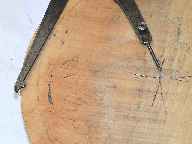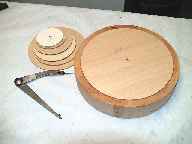Chas - interesting points. I'd not considered the grain density producing differing compression at the chuck end or the grain folding at the tail-stock. Also I'd never heard of cone centres, so I could look into. Many thanks!
AndyT - planing after turning is something I had thought about, and I think should work very well where the turning has been slightly off-centre, thanks!
Nev - that is indeed the problem, cheers for the info on jig you tried.
Jacob - Marking Gauge method sounds good, I'll give that a try tonight.
The [current] project is making tool handles with a ferrule holding a blade in place. As the ferrule outer diameter is just 1mm less than the outer diameter of the wooden handle it buts up against, it is very obvious when it is off centre. (it's basically in line with the handle on one side and set back from the edge on the other).
As I see it there are so many sources of error (below) I'd like to make sure I'm not introducing any additional ones with the wrong method. Thanks all for your input, given me plenty to think about.
possible sources of error:
Rounding errors / inaccuracy in measurements
Difficulty of holding a ruler in place while drawing the line corner to corner

width of pencil line
Grain folding towards path of least resistance
Human error in holding the turning gouge!
P.S. to Rodders: I have not (and I'm sure this applies to many others) received any woodworking education other than Youtube videos, library books and the people on this forum; so when someone asks a question with an obvious answer it's not really helpful to open with sarcy post belittling em.
Chris

















































